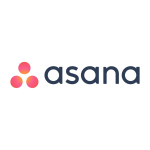Asana unveils integrations with Atlassian Jira (Server Edition), Microsoft Teams, Slack and Zoom
New Rules automation connects the enterprise's most essential tools in a click
SAN FRANCISCO--(BUSINESS WIRE)--Asana, Inc. (NYSE: ASAN), a leading work management platform for teams, today announced the addition of new and expanded integrations with Atlassian Jira (Server Edition), Microsoft Teams, Slack and Zoom to its industry-leading app ecosystem featuring nearly 200 integrations. Further enhancing its offerings for enterprise customers, Asana also introduced increased admin capabilities and more ways for teams to work securely with automation, enabling IT teams to effectively deploy and manage their software at scale.
As 2020 comes to a close, organizations are still struggling to connect and collaborate efficiently, despite having more ways to work asynchronously than ever before. According to an Asana survey conducted in October 2020, enterprise workers switch between an average of 10 apps 25 times per day, resulting in unconnected communication, reduced efficiency and duplication of work.
�Employee experience is the new enabler of customer experience, and the key for enterprises to become more agile in the era of COVID-19 and beyond,� said Alex Hood, Head of Product, Asana. �By empowering their teams with the new tech stack for the enterprise, organizations can move faster and coordinate work effortlessly, no matter where their employees are located.�
Hood continues, �To meet this moment, we�re introducing more ways to connect Asana to the essential apps of the enterprise, including new and enhanced integrations with Zoom, Slack, Microsoft Teams and Atlassian Jira Server Edition, and deepening our own workflow automation and centralized admin control capabilities. As we continue delivering on our vision to be the navigation system for all organizations, we�re proud that Asana is trusted by two-thirds of the Fortune 500, from Cisco to Discovery to McKesson, as their collaborative work management tool of choice.�
Expanding Asana�s App Ecosystem
Zoom for Asana
With the new Zoom for Asana, customers can now attach Zoom call transcripts to Asana tasks for quick reference or to give teammates further context, significantly reducing the number of times teams will have to switch between both platforms. In addition, the recently announced Asana for Zoom Apps will enable Zoom customers to subscribe and receive notifications from Asana projects directly within Zoom chat channels.
�In October, we announced Zoom Apps, enabling customers to use their favorite apps, including Asana, in Zoom for the first time,� said Oded Gal, Chief Product Officer, Zoom. �Today, we�re pleased to partner with Asana on introducing Zoom for Asana, empowering teams to create and link to meetings directly within Asana. By integrating bilaterally across both platforms, Asana and Zoom customers will be able to prioritize their work in one place, driving and simplifying workflows no matter where the work is happening.�
Asana for Slack
With the updated Asana for Slack integration, teams can share milestones, projects and portfolios as unfurls within Slack channels. As one of Asana and Slack�s most popular integrations, the Asana for Slack enhancement builds on the existing ability to create and assign tasks from Slack messages while supporting Slack Enterprise Grid customers for the first time. Enterprise Grid is designed for very large businesses or those in highly regulated industries.
"Slack�s open platform is designed to serve as a critical engagement layer that brings people, processes and systems together in a way that makes work-life simpler,� Steve Wood, VP of Product, Slack Developer Platform. �The latest enhancements to the Asana for Slack integration are emblematic of that vision, delivering expanded collaboration functionality to an even greater set of customers. We look forward to the continued expansion of our work with Asana to build essential tools for the enterprise that will empower our many joint customers to manage work more efficiently.�
Asana for Microsoft Teams
Following the launch of Asana for Microsoft Teams in June 2020, customers can now create tasks directly within Microsoft�s recently launched Teams meetings feature, ensuring that key action items are reflected in Asana in just a few clicks.
�Earlier this year, we expanded our collaboration with Asana with the launch of Asana for Microsoft Teams to empower our customers with the tools they need to securely collaborate, communicate and coordinate their work,� said Mike Ammerlaan, Director of Microsoft 365 Ecosystem Marketing, Microsoft Corp. �We�re continuing to evolve our co-created tools for enterprise companies, including the ability for customers to access Asana via our latest product innovation � Apps in Microsoft Teams meetings.�
Asana for Atlassian Jira (Server Edition)
Coupled with Asana�s current integration for Jira Cloud, Asana for Atlassian Jira (Server Edition) enables teams to create and link Jira issues from directly within Asana tasks, and receive updates on open Jira issues - whether they�re working in the cloud or on-premise.
New Suite of Controls for Enterprise Admins
Asana is also making it easier to protect and manage an organization�s data with new admin controls. Now, enterprise admins have the power to view, block and accept which third-party apps integrate with Asana and control whether users can attach files to tasks. In addition to knowing that data in Asana is encrypted both in transit and at rest for all users and having the ability to terminate user sessions if a device is lost or stolen, enterprise admins can have greater peace of mind that their data is safe and secure, across remote teams and timezones.
�Our marketing and design teams have been using Asana for years, successfully streamlining tasks and processes,� said Alvina Antar, Senior Vice President and Chief Information Officer, Okta. �Given this year�s quick shift to remote work and our long-term strategy around Dynamic Work, we knew it was time to standardize employees onto one platform, and now Okta relies on Asana to organize and orchestrate work. Not only do our employees love Asana, but it also has the capabilities to scale with our rapid growth and improve cross-functional collaboration and productivity � ultimately supporting our transition to Dynamic Work.�
Coming Soon: Integration Automation with Rules
In the coming months, Asana will deliver more ways for teams to create Rules-based automation with essential enterprise integrations, including Teams, Slack and Zoom, to customize and automate work happening across those tools with no coding skills required. For example, a team�s review and approval process in Asana can expand to include external notifications in third party apps, such as Slack and Zoom. As the work progresses in Asana, customizable Rules with integrations will automatically trigger notifications within those platforms to keep teams informed and work moving forward seamlessly.
About Asana
Asana helps teams orchestrate their work, from small projects to strategic initiatives. Headquartered in San Francisco, CA, Asana has more than 82,000 paying organizations and millions of free organizations across 190 countries. Global customers such as Sephora, Sky, Spotify, Viessmann, and Woolworths rely on Asana to manage everything from company objectives to digital transformation to product launches and marketing campaigns. For more information, visit www.asana.com.
Research Methodology
Conducted on behalf of Asana by Sapio Research in October 2020, the survey of 2,353 knowledge workers from companies with more than 5,000 employees included respondents located in Australia, France, Germany, Japan, Singapore, the U.K., and the U.S.
Contacts
Leah Wiedenmann
[email protected]
415-612-0635












